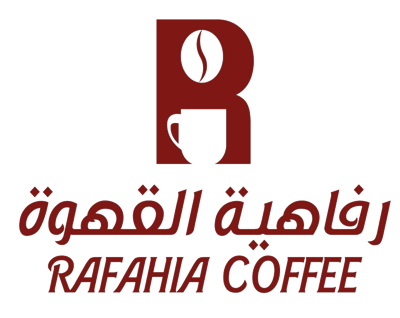Water temperature plays a major role in preparing a cup of coffee, as it directly affects the process of extracting flavors from coffee beans, and thus the final taste of the cup of coffee. Coffee is a relatively complex drink, as it contains a variety of compounds that need a certain temperature to balance their flavors between sweetness, acidity and bitterness. If the water temperature is too high, this may lead to over-extraction, making the taste very bitter and pungent, while if it is too low, the flavors may not be fully extracted, making the coffee very dull and weak. In this topic, we will stop at some points that can help you in how to prepare an exceptional cup of coffee.
The effect of different water temperatures on coffee:
1- High temperatures (more than 96 C°)
When the water temperature is higher than 96°C, what is known as “over-extraction” occurs, where large amounts of bitter and pungent compounds are extracted from the coffee beans, which leads to:
- A bitter, pungent taste that overpowers the natural taste of coffee and other flavours.
- Loss of balance between sweetness, acidity and bitterness.
- Flavors not in harmony with the feeling of fullness of taste.
2- Low temperatures (less than 85 C°)
In this case, the flavours are not sufficiently extracted from the coffee beans, which leads to what is called “under-extraction”, and the result is:
- Very weak and dull taste.
- Lack of deep taste and rich flavours in coffee.
- Coffee tends to taste undesirably acidic or sour.
3- The ideal temperature range is (90-96 C°).
When the right temperature is used to brew coffee, the perfect balance occurs between the extraction process and the extracted flavours, resulting in:
- A cup of coffee balanced in sweetness, acidity and bitterness.
- Perfect extraction of aromatic coffee compounds and natural oils.
- It is characterized by a rich and harmonious taste that reflects the quality of the grains and the method of preparation.
The relationship between water temperature and coffee types:
The water temperature varies depending on the method of preparing coffee, and each type of coffee has a specific temperature range that affects the extraction of flavors and achieving the ideal taste.
filtered coffee
- Ideal range: 90 – 96 C°
- Filtered coffee is one of the methods that requires the most balance in temperature, as this helps extract the sweet and sour flavors evenly without over-extraction.
- If the temperature is higher than the ideal range, this may lead to bitter flavours, and if the temperature is lower, the taste becomes dull and incomplete.
Espresso
- Ideal range: 88 – 94 C°
- Espresso requires precise temperatures to achieve intense, balanced flavour within a short extraction time (25-30 seconds).
- Higher temperatures give espresso a fuller body and stronger flavour, while lower temperatures result in less extraction and more acidic espresso.
Cold drip coffee
- It does not depend on heat at all, but rather extraction is done using cold water or at room temperature for a long period of up to 12-24 hours.
- The absence of heat results in a coffee that is less acidic and smoother, with a rich, concentrated flavour.
Turkish coffee
- Ideal range: 80- 90 C°
- Turkish coffee is prepared by boiling water and sugar (optional) at a relatively low temperature.
- Temperature control is important to get a thick foam and a balanced taste without the bitter taste overwhelming the coffee.
Coffee with milk (cappuccino and latte)
- These types are based on espresso, so the temperature of the espresso affects the final flavor.
- Adding steamed milk at a temperature of around 60-65 C° enhances the natural sweetness of the milk and complements the flavours of the espresso.
Tips to improve the coffee preparation process:
First: Measure the water temperature accurately.
- Use a dedicated thermometer or an electric kettle with temperature control to ensure that the water is heated to the appropriate range (90-96 C°).
- Avoid relying on guesswork as even a slight discrepancy can greatly affect the flavour.
Second: Use the appropriate water
- Use pure water free of impurities, to ensure that minerals or unwanted substances do not affect the taste.
- The temperature of pure water is more stable, compared to water containing impurities.
Third: Choosing the appropriate preparation method
- Make sure to adjust the temperature according to the type of coffee and the method of preparation.
- Espresso: 88 – 94 C°
- Filtered coffee: 90 – 96 C°
- Turkish coffee: less than 90 C°, to avoid over-boiling.
Fourth: Use the appropriate tools
- Invest in tools such as electric kettles with thermostatic control, electronic scales to accurately control quantities.
- Use a coffee machine or manual brewer which provides more control over the extraction process.
Fifth: Continuous experimentation
- Experiment with different temperatures with your favorite type of coffee, to determine the temperature range that best suits your taste.
- Note the effect of heat on the flavour in terms of sweetness, acidity and bitterness, and adjust the heat according to the results of the experiment.
Sixth: Do not boil the water more than necessary.
- Avoid letting the water boil for long periods of time as this causes oxygen loss, which can affect extraction and give the coffee a flat taste.
Seventh: Preparing the grains correctly
- Make sure to grind the beans according to the method of preparing each type of coffee,
Fine grinding of Turkish coffee.
Medium grind for filtered coffee.
- Very fine grind for espresso.
- Grinding the beans just before preparation helps preserve fresh flavours.
Eighth: The right time to use water
- Use water as soon as it reaches the appropriate temperature.
- If the kettle has finished boiling the water, let the water cool down for a few seconds before pouring it over the coffee.
Ninth: Stirring during preparation
- Stir while preparing both Turkish and filtered coffee, to ensure even distribution of water over the ground coffee and balanced extraction.
Tenth: Clean the tools regularly.
- Keep the tools used in preparation clean, because old coffee residues may affect the taste.
Experimentation and practice are the key to improving your coffee brewing skills. Over time, you will discover the technique and temperature that best suits your taste buds.
Coffee Wellness Your number one advisor for everything coffee related
At Coffee Luxury, we believe that coffee is not just a drink, but a unique experience that deserves attention to the smallest details. Therefore, we strive to be your first reference for everything related to coffee, from preparation tips to the secrets of choosing the perfect ingredients. Enjoy an exceptional taste journey with every cup, and let us accompany you to achieve a complete coffee experience that reflects your passion for this magical world. For more articles and tips about coffee, follow the Coffee Luxury blog now.

